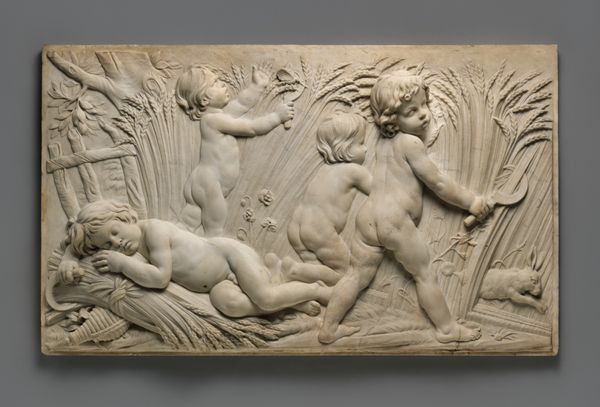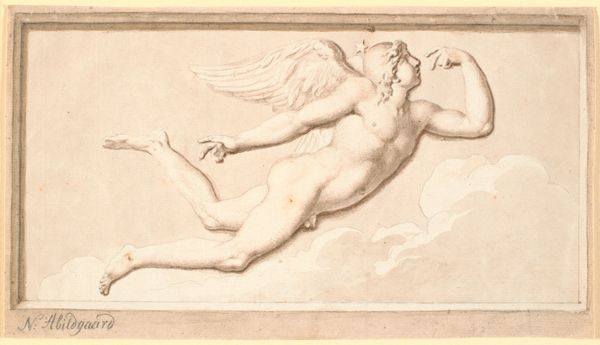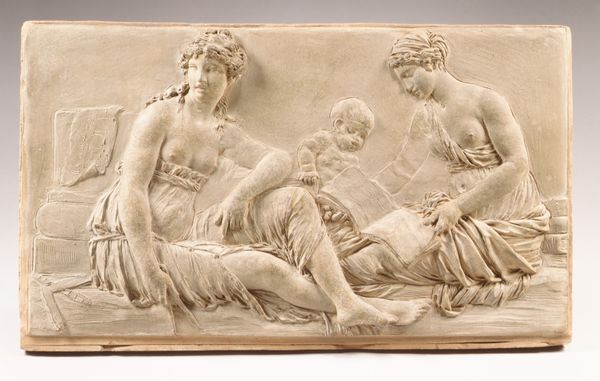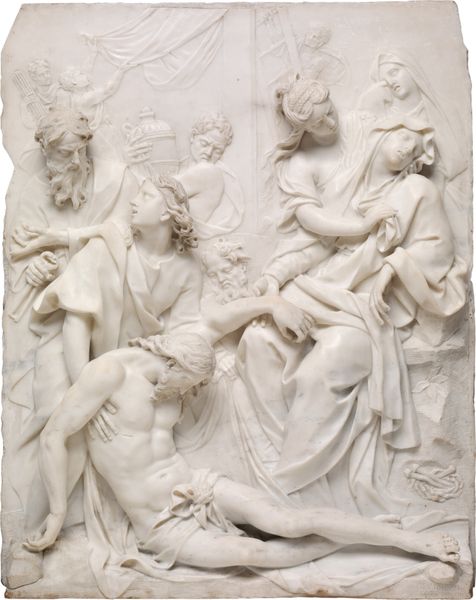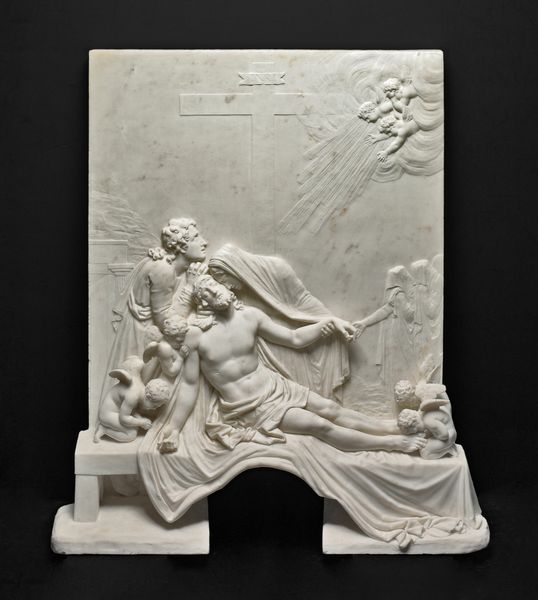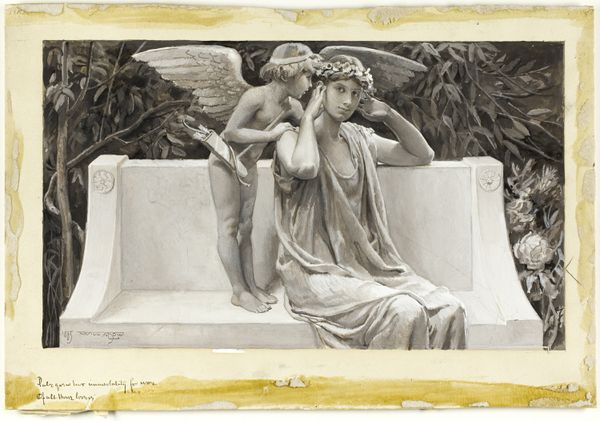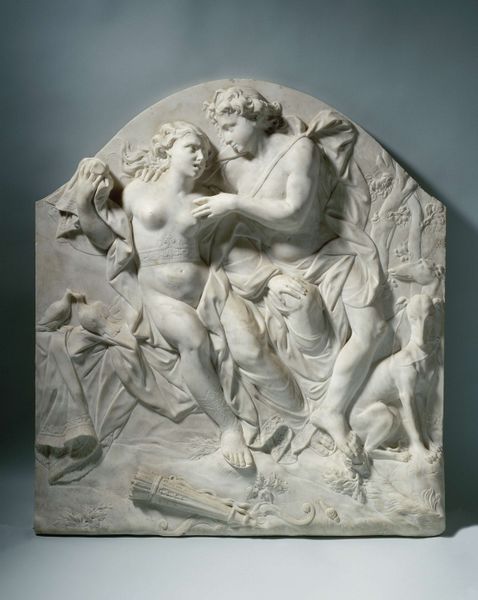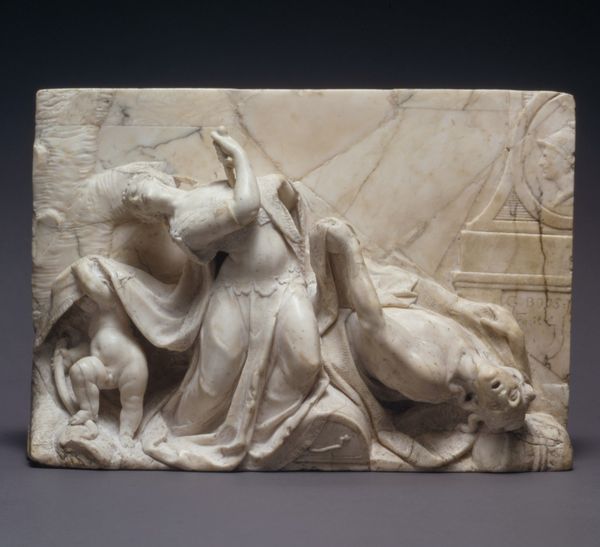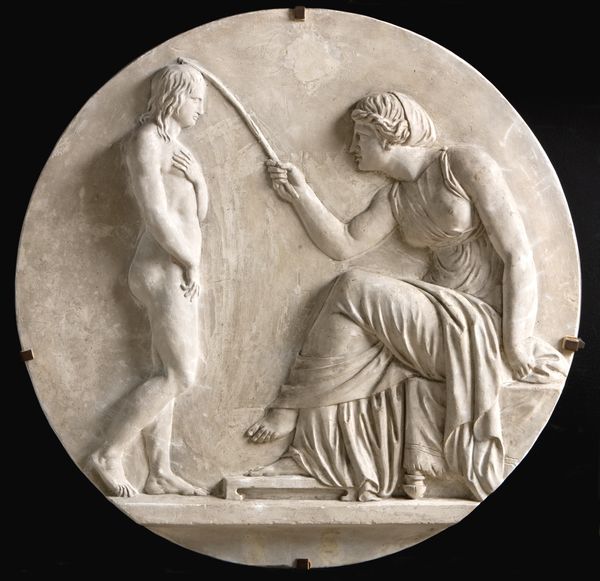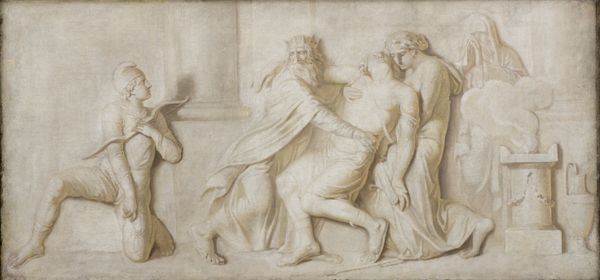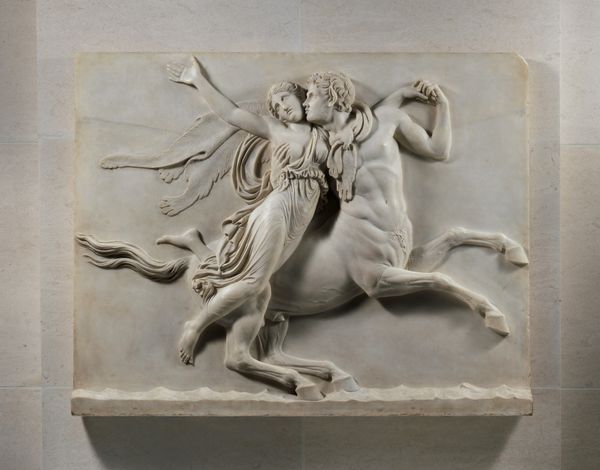
Dimensions: object: 1257 x 1829 mm
Copyright: CC-BY-NC-ND 4.0 DEED, Photo: Tate
Editor: This is Henry Hugh Armstead’s "Hero and Leander," a marble relief sculpture in the Tate. It's a heartbreaking scene; the carving is incredible. What stands out to you? Curator: Well, let’s consider the material. Marble, historically associated with wealth and power. This relief, depicting tragic lovers, challenges traditional notions of art serving solely the elite. How does the act of carving such a delicate scene in a hard, unforgiving medium influence our understanding? Editor: It makes it feel more permanent, a lasting monument to their love and loss, perhaps? Curator: Exactly. And who was able to afford such permanence? What does the choice of this myth say about the intended audience and Armstead’s own social commentary? Editor: It’s fascinating to think about art as a social object, not just an aesthetic one. Curator: Precisely. Examining the materials and production opens a whole new perspective.
Comments
tate 7 months ago
⋮
http://www.tate.org.uk/art/artworks/armstead-hero-and-leander-n02054
Join the conversation
Join millions of artists and users on Artera today and experience the ultimate creative platform.
tate 7 months ago
⋮
This marble relief and the adjacent painting by William Etty show two episodes from the same classical story of two young lovers, Hero and Leander. Etty depicts the moment as the lovers say their final farewell: the moon in eclipse, symbol of impending disaster, foretells the tragedy of Leander's drowning. Armstead shows Hero embracing her dead lover, watched over by an eagle, symbol of Jupiter, the god who ordered the affairs of all other gods and men. Gallery label, September 2004
